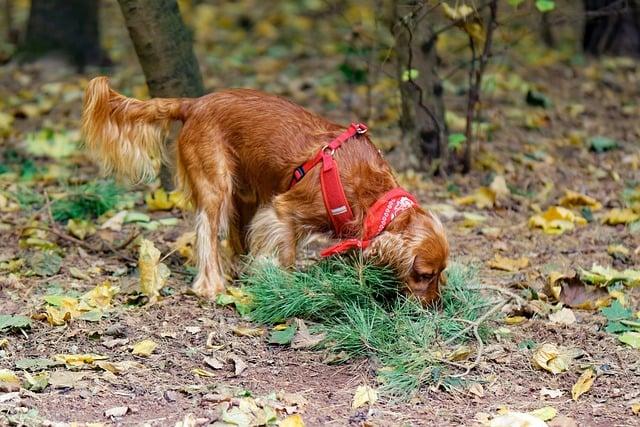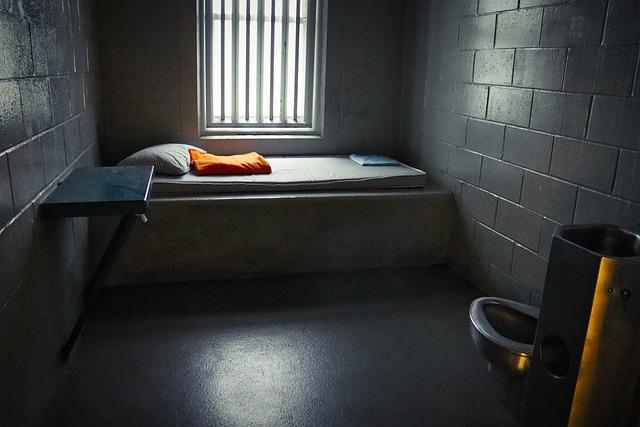When Max, a playful golden retriever, nipped at his owner during a game, the moment felt shocking. Instead of reacting with anger, Sarah remembered the importance of understanding. She calmly set boundaries, using a firm “no” and redirecting Max to a toy. This approach not only taught him that biting was unacceptable but also reinforced positive behavior. Punishment doesn’t mean harshness; it’s about guiding your dog with patience and consistency. Remember, a well-trained dog is a happy companion. Choose understanding over anger for lasting results.
Contents
- Understanding the Root Causes of Aggression in Dogs
- Effective Communication Techniques to Discourage Biting
- Implementing Positive Reinforcement Strategies for Behavior Modification
- Establishing a Safe Environment to Prevent Future Incidents
- Q&A
Understanding the Root Causes of Aggression in Dogs
Understanding the underlying factors that contribute to canine aggression is crucial for any dog owner. Aggression in dogs can stem from a variety of sources, including fear, territorial instincts, and lack of socialization. Recognizing these root causes can help you address the behavior more effectively rather than simply reacting to the aggression itself. By identifying the triggers, you can create a safer environment for both your dog and those around them.
One common cause of aggression is **fear-based reactions**. Dogs that feel threatened may resort to biting as a means of self-defense. This can occur in situations where they feel cornered or overwhelmed. It’s essential to observe your dog’s body language and recognize signs of fear, such as cowering, growling, or showing their teeth. Understanding these signals allows you to intervene before the situation escalates, helping your dog feel more secure and less likely to lash out.
Another significant factor is **territorial behavior**. Dogs are naturally protective of their space, and this instinct can lead to aggressive actions when they perceive an intruder. This could be a stranger approaching your home or even another pet entering their territory. To mitigate this behavior, it’s important to establish boundaries and provide your dog with a safe space where they can retreat when feeling threatened. Training them to respond calmly to visitors can also reduce territorial aggression.
Lastly, **lack of socialization** can contribute to aggressive tendencies. Dogs that haven’t been exposed to various environments, people, and other animals may react aggressively out of uncertainty. Early socialization is key to helping your dog develop confidence and learn appropriate behaviors. Engaging in positive experiences with other dogs and people can significantly reduce the likelihood of aggressive incidents, fostering a more balanced and well-adjusted pet.
Effective Communication Techniques to Discourage Biting
When addressing the issue of biting, it’s crucial to establish clear communication with your dog. Dogs thrive on consistency and understanding, so using specific verbal cues can help convey your expectations. **Firmly but calmly** say “no” or “stop” when your dog bites, ensuring your tone is serious yet not frightening. This helps your dog associate the behavior with a negative response, reinforcing the idea that biting is unacceptable.
Non-verbal communication plays a significant role as well. Dogs are highly attuned to body language, so adopting a confident posture can make a difference. **Avoid direct eye contact** when your dog bites, as this can be perceived as a challenge. Instead, turn your body slightly away and use your hands to create a barrier between you and your dog. This non-threatening approach can help de-escalate the situation while still conveying your disapproval.
Positive reinforcement is another powerful tool in your communication arsenal. When your dog refrains from biting or responds to your cues, immediately reward them with praise or a treat. This not only reinforces good behavior but also strengthens the bond between you and your pet. **Consistently rewarding** desirable actions will encourage your dog to repeat them, gradually reducing the likelihood of biting in the future.
Lastly, consider redirecting your dog’s energy towards appropriate outlets. Providing chew toys or engaging in interactive play can help satisfy their natural instincts while keeping them away from biting. **Encourage your dog** to focus on these alternatives by using enthusiastic praise when they choose to play with toys instead of nipping at you. This proactive approach not only discourages biting but also promotes a healthier, more enjoyable interaction between you and your furry friend.
Implementing Positive Reinforcement Strategies for Behavior Modification
When addressing undesirable behaviors in dogs, such as biting, it’s crucial to focus on constructive approaches rather than punitive measures. Positive reinforcement strategies can effectively modify behavior while fostering a trusting relationship between you and your pet. By rewarding desirable actions, you encourage your dog to repeat those behaviors, creating a more harmonious living environment.
To implement these strategies, start by identifying the specific behaviors you want to encourage. For instance, if your dog tends to nip during play, redirect their energy towards more appropriate toys. When they engage with the toy instead of your hand, immediately offer praise or a treat. This not only reinforces the desired behavior but also helps your dog associate playtime with positive experiences.
Consistency is key in behavior modification. Ensure that all family members are on the same page regarding the reinforcement techniques used. Establish clear rules and stick to them; for example, if your dog jumps up to greet you, teach them to sit instead. Reward them for sitting calmly, and over time, they will learn that this behavior earns them affection and attention, while jumping does not.
Additionally, consider incorporating training sessions into your routine. Short, frequent sessions can help reinforce good behavior and provide mental stimulation. Use a variety of rewards, such as treats, toys, or verbal praise, to keep your dog engaged. Remember, the goal is to create a positive learning environment where your dog feels safe and motivated to learn, ultimately reducing the likelihood of unwanted behaviors like biting.
Establishing a Safe Environment to Prevent Future Incidents
Creating a secure and nurturing environment is essential for both your dog’s well-being and your own safety. By establishing clear boundaries and consistent routines, you can significantly reduce the likelihood of aggressive behavior. Dogs thrive on structure, so implementing a daily schedule for feeding, walks, and playtime can help them feel more secure and less anxious. This predictability can diminish the chances of unexpected reactions, such as biting.
Another crucial aspect of fostering a safe environment is socialization. Gradually introducing your dog to various people, pets, and situations can help them become more comfortable and less fearful. Consider enrolling your dog in obedience classes or arranging playdates with well-mannered dogs. This exposure not only builds their confidence but also teaches them appropriate behaviors in different contexts, reducing the risk of aggressive incidents.
Positive reinforcement plays a vital role in shaping your dog’s behavior. Instead of focusing solely on punishment, reward your dog for displaying calm and friendly interactions. Use treats, praise, or playtime as incentives for good behavior. This approach encourages your dog to associate positive experiences with social interactions, making them less likely to resort to biting as a means of communication or defense.
Lastly, it’s important to recognize your dog’s body language and triggers. Understanding when your dog feels threatened or uncomfortable can help you intervene before a situation escalates. Pay attention to signs of stress, such as growling, stiffening, or backing away. By being proactive and addressing these signals, you can create a more harmonious environment that minimizes the risk of biting incidents in the future.
Q&A
-
Should I punish my dog for biting?
Instead of punishment, focus on understanding the reason behind the bite. Dogs may bite out of fear, pain, or frustration. Addressing the root cause through training and positive reinforcement is more effective than punishment.
-
What are effective ways to correct biting behavior?
Use positive reinforcement techniques to encourage good behavior. Reward your dog with treats or praise when they interact gently. Redirect their biting behavior to appropriate toys, and consistently reinforce these alternatives.
-
How can I prevent my dog from biting in the first place?
Socialization is key. Expose your dog to various environments, people, and other animals from a young age. Training classes can also help teach your dog proper behavior and reduce the likelihood of biting incidents.
-
When should I seek professional help for biting issues?
If your dog’s biting behavior is aggressive or persistent, it’s crucial to consult a professional dog trainer or behaviorist. They can provide tailored strategies and ensure safety for both you and your dog.
addressing biting behavior in dogs requires a balanced approach of discipline and understanding. By implementing positive reinforcement and consistent training, you can foster a trusting relationship while ensuring safety for all. Remember, patience is key!




